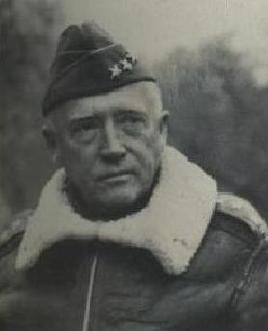
|

|
Patton decided during childhood that his goal in life was to become a hero. His ancestors had fought in the Revolutionary War, the Mexican War and the Civil War, and he grew up listening to stories of their brave and successful endeavors. He attended the Virginia Military Institute for one year. He attended the United States Military Academy at West Point but along with his friend, Courtney Hodges, was forced to leave after a year because of poor test results. Patton restarted the course and graduated in 1909 (46/103). He was then commissioned a Second Lieutenant in the 15th cavalry Regiment. Patton married Beatrice Ayer, whom he dated while at West Point, on May 26, 1910.
In 1912 he represented the United States at the Stockholm Olympics in the first Modern Pentathlon. Originally open only to military officers, it was considered a rigorous test of the skills a soldier should possess. Twenty-six year old Patton did remarkably well in the multi-event sport, consisting of pistol shooting from 25 meters, sword fencing, a 300 meter free style swim, 800 meters horse back riding and a 4-kilometer cross country run. He placed fifth overall, despite a disappointing development in the shooting portion. While most chose .22 revolvers, Patton felt the event's military roots garnered a more appropriate weapon, the .38. During the competition Patton was docked for missing the target, though he contended the lost bullet had simply passed through a large opening created by previous rounds from the .38, which left considerably larger holes.
After the Olympics, Patton kept busy taking lessons at the French cavalry School and studying French sword drills. In the summer of 1913, Patton received orders to report to the commandant of the Mounted Service School in Fort Riley, Kansas, where he became the school's first Master of the Sword. He designed and taught a course in swordsmanship while he was a student at the school.

With the onset of World War I in 1914, tanks were not being widely used. In 1917, however, Patton became the first member of the newly established United States Tank Corps, where he served until the Corps were abolished in 1920. He took full command of the Corps, directing ideas, procedures and even the design of their uniforms. Along with the British tankers, he and his men achieved victory at Cambrai, France, during the world's first major tank battle in 1917. Using his first-hand knowledge of tanks, Patton organized the American tank school in Bourg, France and trained the first 500 American tankers. He had 345 tanks by the time he took the brigade into the Meuse-Argonne Operation in September 1918. When they entered into battle, Patton had worked out a plan where he could be in the front lines maintaining communications with his rear command post by means of pigeons and a group of runners. Patton continually exposed himself to gunfire and was shot once in the leg while he was directing the tanks. His actions during that battle earned him the Distinguished Service Cross for Heroism, one of the many medals he would collect during his lifetime. An outspoken advocate for tanks, Patton saw them as the future of modern combat. Congress, however, was not willing to appropriate funds to build a large armored force. Even so, Patton studied, wrote extensively and carried out experiments to improve radio communications between tanks. He also helped invent the co-axial tank mount for cannons and machine guns.
After WWI, Patton held a variety of staff jobs in Hawaii and Washington, D.C. He graduated from the Command and General Staff School in 1924, and completed his military schooling as a distinguished graduate of the Army War College in 1932.

 |